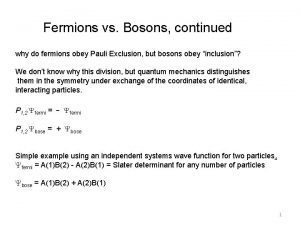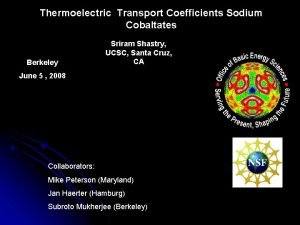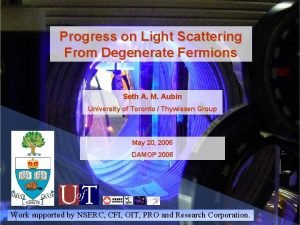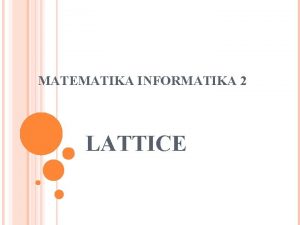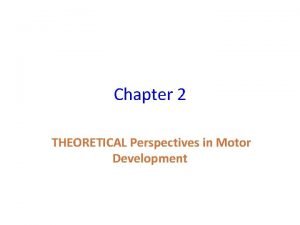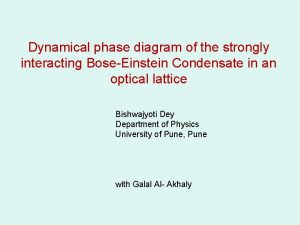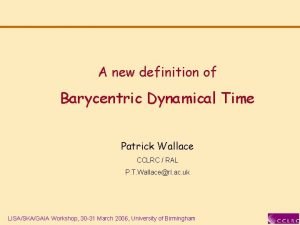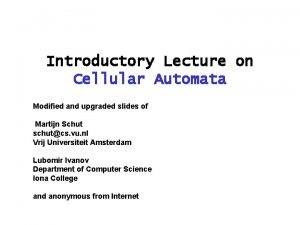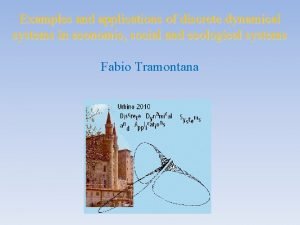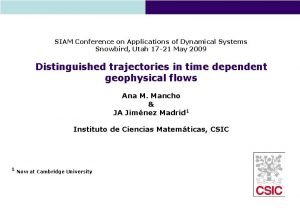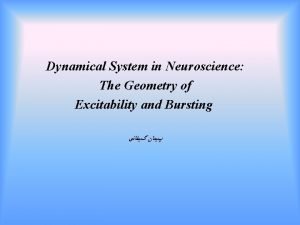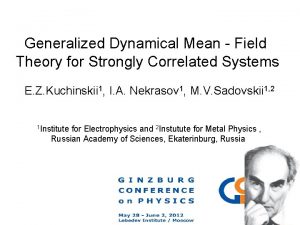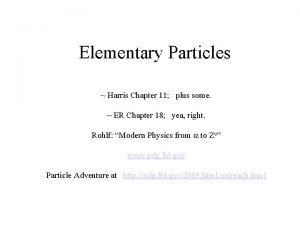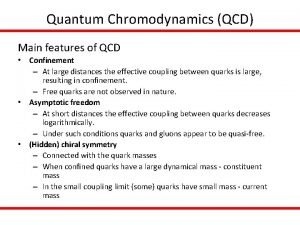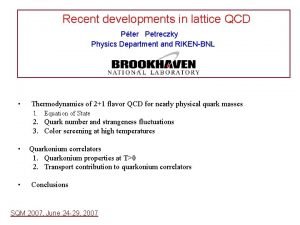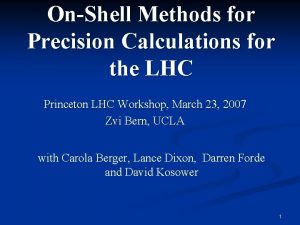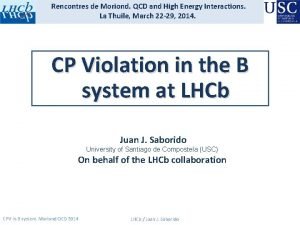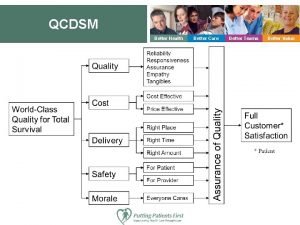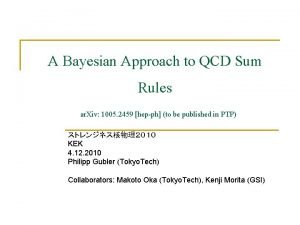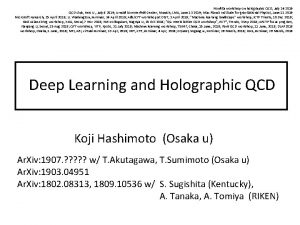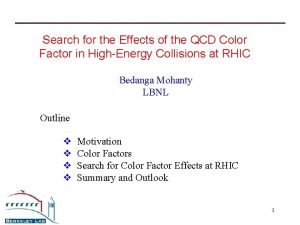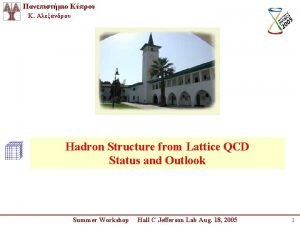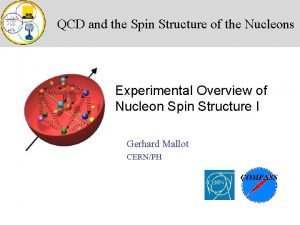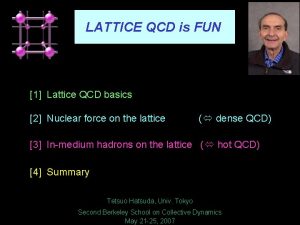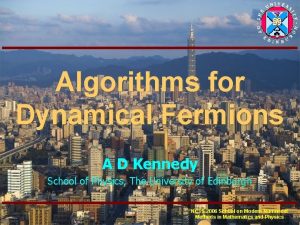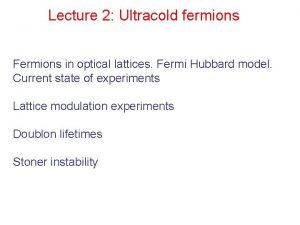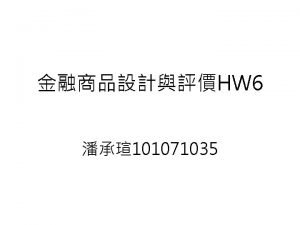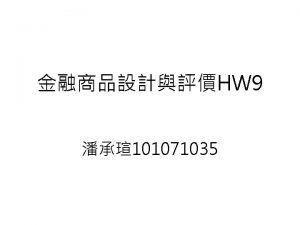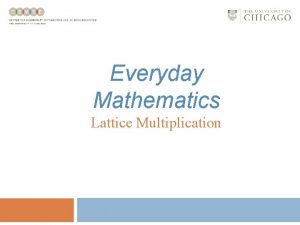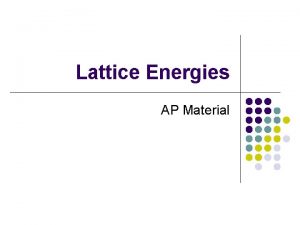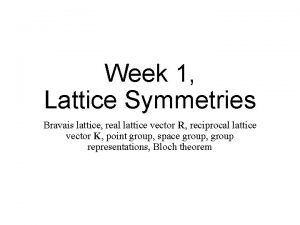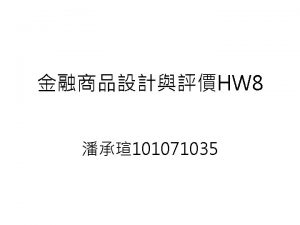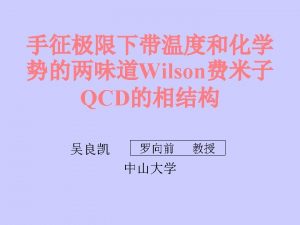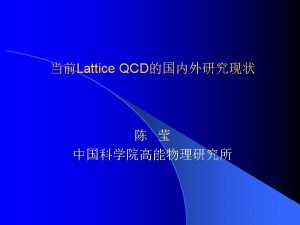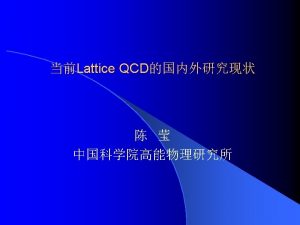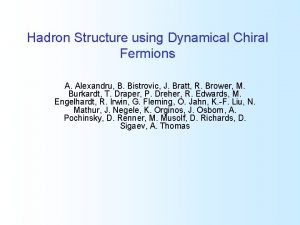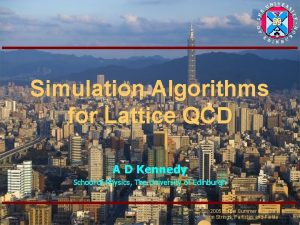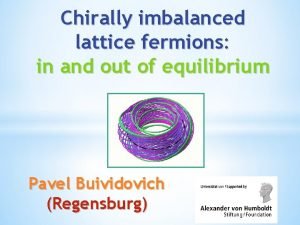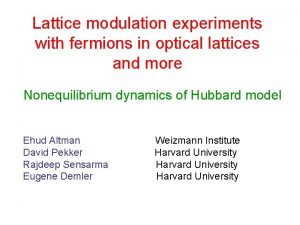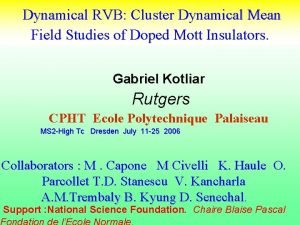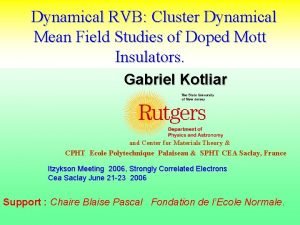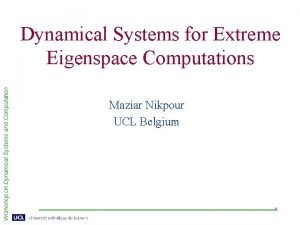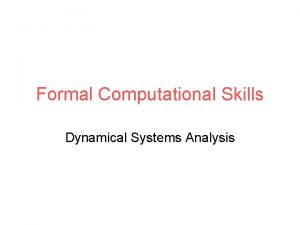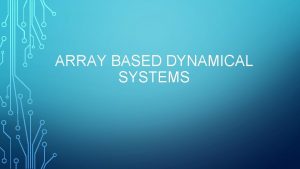Algorithms for Lattice QCD with Dynamical Fermions A







![Is 1/2 M Finite Volume Local? Improvement Lattice Spacing 4 [1] B Bunk, M Is 1/2 M Finite Volume Local? Improvement Lattice Spacing 4 [1] B Bunk, M](https://slidetodoc.com/presentation_image_h2/216eab6765e5322e4be17c845613f0e9/image-8.jpg)



























- Slides: 35

Algorithms for Lattice QCD with Dynamical Fermions A D Kennedy University of Edinburgh Lattice 2004, Fermilab

Testimonial …The lattice conferences have had a steady diet of spectroscopy and matrix element calculations from these projects. But this year there seemed to be a pause. I think many people have decided that they just cannot push the quark masses down far enough to be interesting, and have gone back to studying (I expect to get a lot of unhappy algorithms. mail about this sentence. ) Tom De. Grand hep-ph/0312241 Algorithms for Lattice QCD 2

Numerical Simulations under Battlefield Conditions: I Algorithms for Lattice QCD 3

Numerical Simulations under Battlefield Conditions: II 4 No continuum limit 4 Two lattice spacings or fewer 4 Autocorrelations ignored 4 Depend on the physics anyhow 4 Naïve volume scaling 4 V for R algorithm 4 V 5/4 for HMC 4 Dynamical quarks 4 No valence mass 4 Two or three flavours 4 CAVEAT EMPTOR! 4 4 4 S Gottlieb (MILC) hep-lat/0402030 K Jansen (tml. QCD and χLF) R Mawhinney (Columbia and RBRC) CP-PACS hep-lat/0404014 CP-PACS and JLQCD Nucl. Phys. B 106 (2002) 195 -196 Algorithms for Lattice QCD 4

Numerical Simulations under Battlefield Conditions: III 4 Wilson (Clover) 4 Very expensive 8 Dirac spectrum not bounded 4 ASQTAD (KS/Staggered) 4 Relatively cheap 8 Dirac spectrum bounded 4 Twisted Mass (QCD™) 4 Relatively cheap 8 Dirac spectrum bounded 4 Domain Wall (GW/Overlap) 4 Chiral limit for nonvanishing lattice spacing 4 How much chiral symmetry is wanted? 410— 100 times ASQTAD 8 At today’s parameters 8 Dirac spectrum bounded Algorithms for Lattice QCD 5

Why Locality? 4 If a QFT is local then… 4 Cluster decomposition 4(Perturbative) Renormalisability 8 Power counting 8 Universality 8 Improvement 4…otherwise 4 Who knows? Algorithms for Lattice QCD 6

Locality 4 A “wavefunction” is obtained by applying a lattice Dirac operator to a point source 4 A QFT is ultralocal if the wavefunction has “compact support, ” 4 A QFT is local if the wavefunction has “fast decrease, ” Algorithms for Lattice QCD 7
![Is 12 M Finite Volume Local Improvement Lattice Spacing 4 1 B Bunk M Is 1/2 M Finite Volume Local? Improvement Lattice Spacing 4 [1] B Bunk, M](https://slidetodoc.com/presentation_image_h2/216eab6765e5322e4be17c845613f0e9/image-8.jpg)
Is 1/2 M Finite Volume Local? Improvement Lattice Spacing 4 [1] B Bunk, M Della Morte, K Jansen & F Knechtli hep-lat/0403022 4 [2, 3] A Hart and E Müller hep-lat/0406030 4 S Dürr & C Hoebling hep-lat/0311002 Algorithms for Lattice QCD 8

Hidden Locality 4 It is easy to transform a manifestly local theory into an equivalent but non-manifestly local form… 4 We use this freedom to replace fermion fields with a non-manifestly local fermion determinant 4 To introduce a pseudofermion representation 4 To simulate the square root of a determinant 4…but in general a non-local theory has no reason to be equivalent to a local one Algorithms for Lattice QCD 9

Fewer Staggered “Tastes” 4 Staggered quarks come in four degenerate tastes 4 det(M) in functional integral 4 det(M)1/2 for two tastes 8 Generate gauge configurations with square root weight using R, PHMC, or RHMC algorithms 4 Is this a local field theory? 8 local M’ such that det(M’) = det(M 1/2)? 8 Must use M’ for valence quarks too for a consistent unitary theory 4 Mixed action computations? 4 4 taste valence + 2 taste sea 4 Unitarity? (same disease as quenched) 4 Which are the physical valence states? Algorithms for Lattice QCD 10

Why Fat Links? 4 Construct good sources & sinks 4 Better overlap with ground state 4 Spatial smearing 4 Suppress UV fluctuations 4 Improved actions for dynamical computations Algorithms for Lattice QCD 11

Fat Links: Buyer’s Guide 4 DBW 2 4 HYP 4 APE 4 Stout 4 FLIC 4 Lüscher-Weiss 4 Iwasaki 4 Symanzik Algorithms for Lattice QCD 12

Fat Links: Dynamical FLIC 4 Molecular dynamics with fat links 4 Fat links appear to work better when projected back onto the SU(3) group manifold 4 Let V be the usual APE smeared link 4 Iterative projection to U satisfying is not differentiable 4 Define instead 4 This is now (almost) differentiable 4 W Kamleh, D B Leinweber & A G Williams hep-lat/0403019 Algorithms for Lattice QCD 13

Stout Links 4 Even more differentiable 4 Let V be a suitably smeared link 4 Define , where T means the traceless antihermitian part (i. e. , projection onto the Lie algebra) 4 This is now differentiable 4 But it does not look too much like projection (except for ) 4 C Morningstar & M Peardon hep-lat/0311018 Algorithms for Lattice QCD 14

Does Stoutness Pay? 4 These methods can be applied iteratively to produce differentiable links of arbitrary obesity 4 Stout links seem to be about as good as ordinary projected links, but require more tuning Algorithms for Lattice QCD 15

Schwartz Alternating Procedure 4 #1: Dynamical Fermion MC algorithm 4 Split lattice into blocks (64) 4 Alternate even & odd block updates 4 Only update links that do not affect neighbouring pseudofermions 8 Painful for fatter fermion actions? 8 Shift blocks to ensure all links get updated 4 Factorize quark determinant (Block LU/Schur) 8 Allows larger step size for light modes (block interaction updates)? 4 M Lüscher hep-lat/0304007 Algorithms for Lattice QCD 16

SAP Preconditioner 4#2: Preconditioner for linear solver 4 Use GCR or FGMRES solver 4 Accurate block solves not required 84 block MR steps, 5 Schwarz cycles 4 Parallelises easily 8 Especially on coarse-grained architectures such as PC clusters 4 Reduces condition number by preconditioning high frequency modes 4 M Lüscher hep-lat/0310048 Algorithms for Lattice QCD 17

R Algorithm 4 Inexact algorithm 4 Distribution has errors of O( 2) 4 Clever combination of nonreversibility and area nonpreservation 4 Asymptotic expansion in 4 Results for large do not just correspond to a renormalisation of the parameters 4 C. f. , perturbation theory is also asymptotic (or worse) 4 C. f. , “improvement” expansion in the cut-off a (lattice spacing) is also asymptotic 8 Scaling for highly-improved theories breaks down at smaller values of a 4 independent of volume 4 But probably so for HMC too, because of instability 4 S Gottlieb, W Liu, D Toussaint, R Renken, & R Sugar Phys. Rev. D 35: 2531 -2542, 1987 Algorithms for Lattice QCD 18

PHMC and RHMC 4 Use polynomial or rational function approximation for action 4 Approximate action suffices for MD 4 Accurate action need for acceptance 4 Functions on matrices 4 Defined for a Hermitian matrix by diagonalisation 4 H = UDU -1 4 f(H) = f(UDU -1) = U f(D)U -1 4 Polynomials and rational functions do not require diagonalisation 4 Hm + Hn = U( Dm + Dn) U -1 4 H -1 = U D -1 U – 1 4 T Takaishi & Ph de Forcrand hep-lat/9608093 4 R Frezzotti & K Jansen hep-lat/9702016 4 A D Kennedy, I Horváth, & S Sint hep-lat/9809092 4 M Clark & A D Kennedy hep-lat/0309084 Algorithms for Lattice QCD 19

Чебышев Approximation 4 Theory of optimal L∞ (Чебышев) approximation is well understood sn(z/M, λ) 4 Equal alternating error maxima 4 Ремез algorithm to find coefficients 4 Золотарев analytic solution for sgn(x) and x± 1/2 4 Rational approximations to sgn(x) of degree (20, 21) 8 Чебышев/Золотарев for 10 -6 < |x| < 1 8 tanh[20 tanh-1(x)] sn(z, k) 4 Чебышев polynomials 8 Tn(x) ≡ cos[n cos-1(x)] 8 Give optimal approximation to higher degree polynomials 8 Not optimal approximation in general 4 Polynomial or Rational? 4 Maximum L∞ [-1, 1] error for |x| proportional to 8 Rational: exp(n/ln ε) 8 Polynomial: 1/n 4 Polynomial approximation to 1/x corresponds to matrix inversion 8 Basically Jacobi method 8 Compare with Крылов solvers 4 Partial fraction expansion and multi-shift Крылов solver to apply rational function Algorithms for Lattice QCD 20

Instability of Symplectic Integrators 4 Symmetric symplectic integrator 4 Leapfrog 8 Exactly reversible… 8…up to rounding errors 4 Ляпунов exponent 4 >0 8 Chaotic equations of motion 8 when exceeds critical value c 8 Instability of integrator 4 c depends on quark mass 4 4 4 C Liu, A Jaster, & K Jansen hep-lat/9708017 R Edwards, I Horváth, & A D Kennedy hep-lat/9606004 B Joó et al. (UKQCD) hep-lat/0005023 Algorithms for Lattice QCD 21

Multipseudofermions 4 We want to evaluate a functional integral including the fermionic determinant det M 4 We write this as a bosonic functional integral over a pseudofermion field with kernel M-1: 4 We are introducing extra noise into the system by using a single pseudofermion field to sample this functional integral 4 This noise manifests itself as fluctuations in the force exerted by the pseudofermions on the gauge fields 4 This increases the maximum fermion force 4 This triggers the integrator instability 4 This requires decreasing the integration step size 4 A better estimate is det M = [det M 1/n]n 4 Algorithms for Lattice QCD 22

Reduction of Maximum Force 4 Hasenbusch trick 4 Wilson fermion action M=1 - H 4 Introduce the quantity M’=1 - ’H 4 Use the identity M = M’(M’-1 M) 4 Write the fermion determinant as det M = det M’ det (M’-1 M) 4 Separate pseudofermion for each determinant 4 Tune ’ to minimise the cost 4 Easily generalises 4 More than two pseudofermions 4 Wilson-clover action 4 M Hasenbusch hep-lat/0107019 Algorithms for Lattice QCD 23

RHMC Force Reduction 4 Use RHMC technique to implement nth root for multipseudofermions 4 Use partial fractions & multishift for nth root 4 No tuning required 4 Cost proportional to condition number (M) 4 Maximum force reduction 4 Condition number (r(M))= (M)1/n 4 Force reduced by factor n (M)(1/n)-1 4 Increase step size to instability again 4 Cost reduced by a factor of n (M)(1/n)-1 4 Optimal value nopt ln (M) 4 So optimal cost reduction is (e ln ) / 4 Cannot reduce exact (mean) force 4 A D Kennedy & M Clark Algorithms for Lattice QCD 24

Reducing δH fluctuations 4 If 4 Follow trajectory U 0 →U 2 with step size δτ/2 4 If probability accept U 2 with 4 Otherwise reject (stay at U 0) 4 How much does this help if we are hitting the integrator instability? 4 Things only get worse if we are not yet in equilibrium 4 M Lüscher & R Sommer Algorithms for Lattice QCD 25

Old Integrator Tricks 4 Sexton-Weingarten 4 Split MD Hamiltonian into parts 8 Boson and fermion actions 4 Construct symmetric symplectic integrator with larger steps for more expensive (fermion) part 8 Use BCH formula 4 Helps if step size limited by cheaper (boson) part 4 Unfortunately, becomes less useful as m. Q → 0 4 D Weingarten & J Sexton Nucl. Phys. Proc. Suppl. 26, 613 -616 (1992) Algorithms for Lattice QCD 26

Dynamical Chiral Fermions 4 Conventions 4 We shall work in Euclidean space with Hermitian matrices 4 We shall write 4 We shall take all Dirac operators to be 5 Hermitian Algorithms for Lattice QCD 27

On-shell chiral symmetry 4 Is it possible to have chiral symmetry on the lattice without doublers if we only insist that the symmetry holds on shell? 4 Such a transformation should be of the form (Lüscher) 4 For it to be a symmetry the Dirac operator must be invariant 4 For a small transformation this implies that 4 Which is the Ginsparg-Wilson relation Algorithms for Lattice QCD 28

Neuberger’s operator: I 4 We can find a solution of the Ginsparg-Wilson relation as follows 4 Let the lattice Dirac operator to be of the form 4 This satisfies the GW relation if 4 And it must also have the correct continuum limit 4 Both of these conditions are satisfied if we define (Neuberger) Algorithms for Lattice QCD 29

Neuberger’s operator: II 4 There are many other possible solutions 4 Use another Dirac operator within Neuberger’s operator 4 The discontinuity is necessary 4 We are only considering vector-like theories 4 Chiral theories with unpaired Weyl fermions can be discretised on the lattice, but getting the phase of the fermion measure correct is critical 4 Simulating such theories is a much harder problem Algorithms for Lattice QCD 30

Into Five Dimensions 4 5 D formulation of overlap 4 Continued fraction representation 4 Relation between Domain Wall & Overlap formulations 4 Gauge fields are only four dimensional 4 Construct fifth dimensional transfer matrix T 4 Integrate out bulk pseudofermion fields 8 Jacobian cancelled by Pauli-Villars fields 4 Construct effective four dimensional Hamiltonian (Cayley transform) 4 Gives Higham approximation to Neuberger operator 4 Truncated Overlap for which 4 Optimal Domain Wall using Золотарев approximation 4 4 4 H Neuberger hep-lat/9806025 A Boriçi, A D Kennedy, B Pendleton, U Wenger hep-lat/0110070 A Boriçi hep-lat/9909057, hep-lat/9912040, hep-lat/0402035 R Edwards & U Heller hep-lat/0005002 T-W Chiu hep-lat/0209153 , hep-lat/0211032, hep-lat/0303008 Algorithms for Lattice QCD 31

Overlap Algorithms 4 many formulations of overlap fermions 4 All satisfy GW relation 4 Equivalent in continuum limit 8 Different lattice Dirac operators within sgn function 8 Different approximations to sgn function 8 Presumably also true for perfect actions 4 Trade-off between speed and amount of chirality 4 Choice of inversion algorithm 8 Inner-outer Krylov iterations 8 Various five dimensional formulations 8 Several possible preconditioners Algorithms for Lattice QCD 32

Dynamical Overlap 4 Fodor, Katz, & Szabó: dynamical overlap on ridiculously small lattices 4 Reflection & refraction 4 Brower, Originos, & Neff: Interpolate between DW & Truncated Overlap 4 Topology change in chiral limit? 4 van der Eshof et al. : Preconditioners, flexible inverters 4 NIC/DESY: Inverter tests for QCD™ & overlap 4 Z Fodor, S Katz, and K Szabó hep-lat/0311010 4 R Brower, K Originos, & H Neff 4 van der Eshof et al. hep-lat/0202025, hep-lat/0311025, hep-lat/0405003 Algorithms for Lattice QCD 33

Other Topics 4 Keh-Fei Liu & Andrei Alexandru 4 Noisy non-vanishing baryon number density on tiny lattices 4 Shailesh Chandrasekharan 4 Strong coupling algorithm for QCD 8 Strong coupling, but chiral limit Algorithms for Lattice QCD 34

The Future: Faster Monte Carlo Algorithms for Lattice QCD 35
 Fermions obeys
Fermions obeys Fiducary
Fiducary Pauli blocking of light scattering in degenerate fermions
Pauli blocking of light scattering in degenerate fermions Lattice lattice
Lattice lattice Dynamical systems theory motor development
Dynamical systems theory motor development Solution in search of a problem
Solution in search of a problem Tdb urban dictionary
Tdb urban dictionary Dynamical systems examples
Dynamical systems examples Accelarationist
Accelarationist Siam conference on applications of dynamical systems
Siam conference on applications of dynamical systems Dynamical systems neuroscience
Dynamical systems neuroscience Dynamical mean-field theory
Dynamical mean-field theory Electroweak interaction
Electroweak interaction Confinement qcd
Confinement qcd Qcd
Qcd Qcd penrose
Qcd penrose Rencontres de moriond
Rencontres de moriond Qcsdm
Qcsdm Qcd sum rules
Qcd sum rules Qcd
Qcd Qcd lagrangian
Qcd lagrangian Color factor qcd
Color factor qcd Qcd
Qcd Qcd
Qcd Sura för anatom
Sura för anatom Egg för emanuel
Egg för emanuel En lathund för arbete med kontinuitetshantering
En lathund för arbete med kontinuitetshantering Formel för standardavvikelse
Formel för standardavvikelse Rutin för avvikelsehantering
Rutin för avvikelsehantering Klassificeringsstruktur för kommunala verksamheter
Klassificeringsstruktur för kommunala verksamheter Myndigheten för delaktighet
Myndigheten för delaktighet Presentera för publik crossboss
Presentera för publik crossboss Kung som dog 1611
Kung som dog 1611 Tack för att ni lyssnade
Tack för att ni lyssnade Debatt artikel mall
Debatt artikel mall Tobinskatten för och nackdelar
Tobinskatten för och nackdelar
